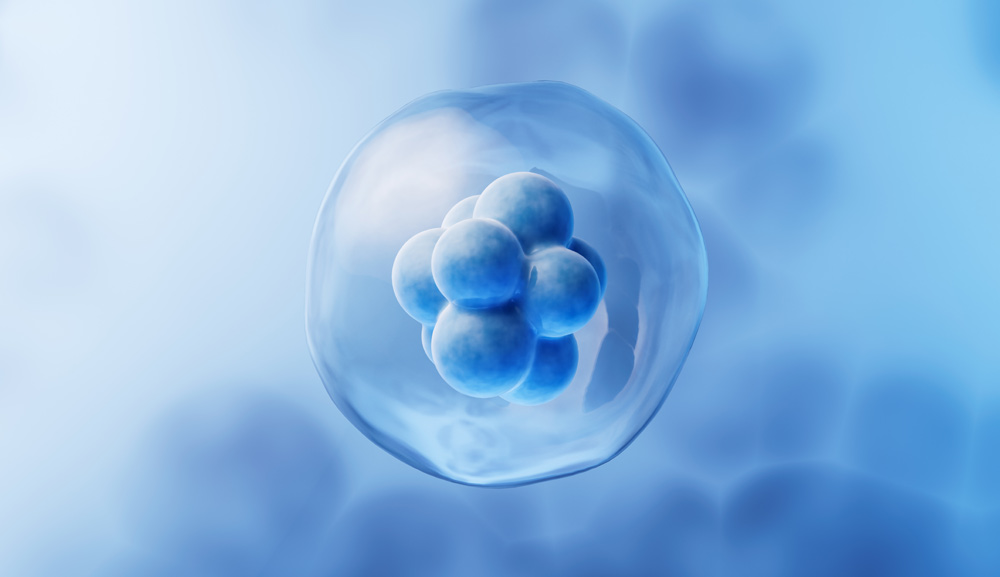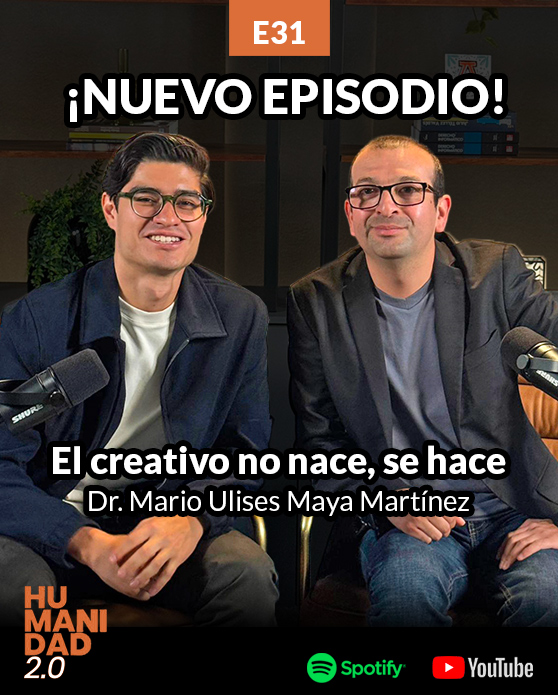
February 28, 2024
Author: Juan Manuel Palomares Cantero
Introduction
Recently, the state of Alabama has found itself at the epicenter of a pioneering judicial decision: the recognition of frozen embryos as beings with rights. This ruling has not only redefined the boundaries of reproductive medicine but has also ignited a profound discussion about the ethical and bioethical principles that guide our society. The cryopreservation of embryos, a technique that has offered hope to countless couples facing fertility challenges, is under ethical scrutiny. How do we balance the potential for life offered by these frozen embryos with the respect and rights they deserve? The answer to this question becomes even more complicated when legal principles, such as "In dubio pro reo," traditionally reserved for the criminal sphere, are applied to the realm of bioethics and reproductive medicine.
Alabama's decision is not only a call to consider life from its earliest conception as worthy of protection, but also a challenge to our perceptions of personhood and embryo rights. This situation leads us to question and reevaluate embryo selection practices, the ethical conditions under which they are preserved, and the inherent risks to their future development. This article seeks to offer a balanced perspective on the intrinsic value of life in its earliest stages and how legislation, ethics, and bioethics can harmoniously coexist in the protection of the most vulnerable. Alabama's decision is not just a turning point for reproductive medicine but a mirror reflecting our deepest values as a society in the face of scientific advancements.
"In dubio pro reo" Principle Applied to Embryos
The legal principle "In dubio pro reo," which translates as "in case of doubt, in favor of the accused," has served for centuries as a bulwark of justice in criminal law, ensuring that uncertainty in the legal process does not result in the unjust conviction of an individual. However, in the context of bioethics and reproductive medicine, this ancient principle takes on a new and profound relevance when reinterpreted to advocate for the protection of human beings at their earliest and most vulnerable stage of development: embryos.
Embryos, although not yet fully developed in the traditional sense, embody the beginning of human life and, as such, they are in a position of extreme vulnerability. They have no voice or ability to advocate for their rights or protection. In this sense, the principle "In dubio pro reo" transforms into an ethical call to err on the side of protection when there is uncertainty regarding the legal and moral status of embryos. This approach suggests that, in the absence of clear consensus on when life begins and the inherent rights derived from this starting point, society and its legal systems should adopt a stance that prioritizes safeguarding the integrity and dignity of embryos.
The reinterpretation of this principle in the context of embryo rights invites deep reflection on how we value and protect life at all stages. It raises the question of whether life protection should begin from the moment of conception or at a later point in development. The application of "In dubio pro reo" in this context is not merely a legal matter but fundamentally one of ethics and morality, where the decision to protect embryos or not reflects the values and principles of a society.
The vulnerability of embryos, far from being an argument to deny them protection, becomes the very basis for giving them the benefit of the doubt regarding their legal status. This cautious approach ensures that, in the absence of absolute certainty, legal and ethical decisions lean towards the preservation of life and dignity, emphasizing a preference for protection in the context of assisted reproduction and biomedical research.
By applying the "In dubio pro reo" principle to embryos, an ethical precedent is established for the treatment of life in its earliest stages. This principle emphasizes the importance of considering the protection of the most vulnerable among us as a moral imperative, guiding legal and ethical decisions in the increasingly complex field of reproductive medicine.
The Duty of Protection of the Embryo as a Person
The conception of embryos as entities deserving of rights and legal protection is strengthened in a deep and multifaceted debate about the beginning of life. Recognizing the embryo as a person is not only a legal act but also an ethical affirmation that reflects a valuation of life in its earliest state. Granting legal status to an embryo that guarantees its protection involves acknowledging its inherent potential to develop into a full human being, endowing it with intrinsic dignity deserving of respect and safeguarding.
This perspective is based on the premise that human life begins at the moment of conception, an argument that, though subject to debate, finds foundation in various ethical, religious, and philosophical traditions. By considering the embryo as a person, legislation and policies must necessarily adapt to include measures that ensure its well-being and protection, from its embryonic state to birth and beyond.
The vulnerability of the embryo, far from being a limitation, becomes the cornerstone of its right to be protected. This vulnerability manifests in its complete dependence and inability to self-protect or express its own interests. From this perspective, society and the legal system have the moral duty and imperative to act as protectors of those who cannot defend themselves. The protection of the embryo, then, becomes a reflection of the deepest values of a society striving to preserve life and dignity in all forms.
By recognizing the embryo as a legal subject, significant challenges and responsibilities are posed for legal and ethical systems. This recognition implies the need to develop a coherent legal framework that addresses not only the protection of embryos in the context of assisted reproduction but also in situations involving scientific research and the use of embryonic tissue. Laws and regulations must carefully balance the rights of the embryo with the rights and freedoms of parents, researchers, and society as a whole, ensuring that the best interests of the embryo are always a primary consideration.
Protection of Minors and Embryos in Legal History
The protection of the most vulnerable individuals, especially minors, has been an essential pillar in the development of just and equitable societies throughout legal history. This commitment has been clearly manifested in the legislative evolution aimed at safeguarding the rights of children, who, due to their age and development, are in a position of particular dependency and vulnerability. From ancient Roman laws introducing the concept of patria potestas, through medieval provisions on guardianship, to modern international conventions such as the UN Convention on the Rights of the Child, a consistent trajectory toward stronger protection of minors has been traced. This evolution reflects an increasingly greater recognition of their intrinsic right to protection, care, and opportunities for healthy development.
The protection of minors' rights, and by extension of embryos, demonstrates our society's ability to adapt and respond to changing notions of justice, morality, and scientific knowledge. This historical commitment to the most vulnerable is not only a reflection of fundamental values of protection and care but also points the way to a future where law and ethics continue to evolve to ensure the welfare and dignity of all human beings, regardless of their stage of development. This dialogue between the past and present in the legal protection of minors and embryos highlights the importance of a reflective and considered approach in navigating the ethical and legal challenges posed by scientific advancement, ensuring that we remain true to our collective duty to safeguard the most defenseless among us.
Ethical Reflections on Embryo Cryopreservation
Embryo cryopreservation, a common practice in reproductive medicine, has revolutionized the possibilities of conception for many couples. This technique raises profound ethical questions that deserve careful examination. Embryo selection, the conditions of their cryopreservation, and the risks associated with the thawing process are aspects that provoke debate regarding the dignity and rights of embryos.
One of the most significant bioethical dilemmas is discrimination in embryo selection. The choice of which embryos to cryopreserve or implant may be based on genetic or viability criteria, implying a value judgment about the potential life of these beings. This practice raises questions about the respect due to each embryo, regardless of its characteristics or possibilities for future development. Selection may be perceived as a form of discrimination since not all embryos receive the same opportunity to continue their development.
The conditions under which embryos are cryopreserved also raise ethical concerns. Cryopreservation involves subjecting embryos to extremely low temperatures, keeping them in a state of indefinite suspension. Although this is done with the purpose of preserving their viability, the unnatural nature of this state raises questions about whether these practices respect the inherent dignity of embryos as potential human life.
The thawing process is not without risks. Not all embryos survive the process of being returned to normal conditions for implantation. This fact introduces an ethical dilemma about exposing embryos to a significant risk of harm or death. The decision to cryopreserve and then attempt to implant these embryos carries the responsibility of considering the implications of subjecting any form of life to a procedure with an uncertain outcome.
These practices, when examined through an ethical lens, may be considered a violation of embryo rights. If moral or legal status is granted to them, then selection, cryopreservation conditions, and the risks of the thawing process must be evaluated in terms of their fairness and respect for those rights. Embryo cryopreservation, while offering hope to many people wishing to conceive, also obliges society to reflect on how to balance technological advances with profound respect for life at all stages.
Conclusion
Alabama's judicial resolution sets a crucial precedent for ethics, bioethics, reproductive medicine, and law, challenging our previous conceptions of life, dignity, and rights from conception. This issue not only redefines the scope of legal protection for frozen embryos but also catalyzes a broader reflection on the ethical principles that should guide our decisions in the era of advanced biotechnology.
The application of legal principles such as "In dubio pro reo" to the sphere of bioethics underscores a paradigm shift towards greater consideration of life in its earliest stages. This approach, advocating for erring on the side of protection in the face of uncertainty about embryo status, reflects a deep commitment to safeguarding the most vulnerable among us. Such a reconsideration of embryo rights demands a delicate balance between scientific advancement and respect for potential human life, challenging society and the legal system to adapt and respond ethically and justly.
Alabama's decision invites broader and deeper discussion, not only within the state's borders but throughout society. It paves the way for reassessing how laws and policies regarding assisted reproduction and embryo cryopreservation should evolve to reflect a deeper respect for life in all its forms. This dialogue is essential to ensure that technological advances in reproductive medicine are conducted ethically, protecting the interests and dignity of all human beings involved, from conception onward.
"Embryos with Rights in Alabama" is not just an article about a judicial ruling; it is a call to reflect on the fundamental values we uphold as a society. It urges us to consider how our laws, medical practices, and ethical decisions can better align with an unwavering respect for the dignity of human life, marking a path forward that honors both scientific innovation and fundamental human rights. On this path, we must navigate carefully, guided by solid ethical principles and an unwavering commitment to protecting those who cannot defend themselves.
Juan Manuel Palomares Cantero is a lawyer, master, and doctor in Bioethics from Anáhuac University, Mexico. He was the director of Human Capital, director and general coordinator at the Faculty of Bioethics. He currently works as a researcher in the Academic Directorate of Integral Training at the same University. He is a member of the Mexican National Academy of Bioethics and the Latin American and Caribbean Federation of Bioethics Institutions.
The opinions shared in this blog are the sole responsibility of their respective authors and do not necessarily represent a unanimous opinion of the seminars, nor do they reflect an official position of CADEBI. We value and encourage any comments, responses, or constructive criticism you wish to share.
i https://www.nytimes.com/es/2024/02/21/espanol/embriones-congelados-ninos-alabama.html
ii Rusconi, M. A. (1998). Principio de inocencia e" in dubio pro reo". Jueces para la democracia, (33), 44-68.
iii Morán Faúndes, J. M. (2014). La valoración de la vida, la subjetivación del embrión y el debate sobre el aborto: aportes desde una perspectiva crítica. Acta bioethica, 20(2), 151-157. https://www.scielo.cl/scielo.php?pid=S1726-569X2014000200002&script=sci_arttext
iv Moratalla, N. L. (2004). La realidad del embrión humano en los primeros quince días de vida. Persona y bioética, 8(21), 6-23. https://www.redalyc.org/pdf/832/83202102.pdf
v Barragán, R. J. S. (2019). Estatuto jurídico del embrión humano. Apuntes de bioética, 2(2), 69-79. https://revistas.usat.edu.pe/index.php/apuntes/article/view/288
vi Tarasco, M. (2011). Vulnerabilidad: consideraciones sobre la utilización pertinente del término en Bioética. Studia Bioethica, 4(2). https://ojs.upra.org/index.php/bioethica/article/view/3518
vii López-Muñiz, J. L. M. (2021). El deber de proteger la vida, y especialmente de los más debilitados, frente a un inexistente derecho a quitarse la vida por sí o por otros. Revista Española de Derecho Constitucional, (122), 47-83. https://www.jstor.org/stable/27113399
viii Loredo Abdalá, A. (2019). Una visión internacional sobre la protección a los niños. http://repositorio.pediatria.gob.mx:8180/handle/20.500.12103/1269
ix Vallejos, Y. C., Dacruz, B. H., & Vallejos, S. C. (2022). Selección de embriones en los tratamientos de fecundación in vitro. Clínica e Investigación en Ginecología y Obstetricia, 49(1), 100709. https://www.sciencedirect.com/science/article/abs/pii/S0210573X2100068X
x Sandoval, F. (2020). Bioética jurídica y crioconservación derivada de las técnicas de reproducción asistida. Comité Directivo, 147-159. https://edkpublicaciones.com/up/pdf/perspectiva_juridica_14.pdf#page=147
xi Zegers-Hochschild, F., Crosby, J. A., & Salas, S. R. (2014). Fundamentos biomédicos y éticos de la criopreservación de embriones. Revista médica de Chile, 142(7), 896-902. https://www.scielo.cl/scielo.php?pid=S0034-98872014000700010&script=sci_arttext&tlng=en
Más información:
Centro Anáhuac de Desarrollo Estratégico en Bioética (CADEBI)
Dr. David Cerdio Domínguez
david.cerdio@anahuac.mx





